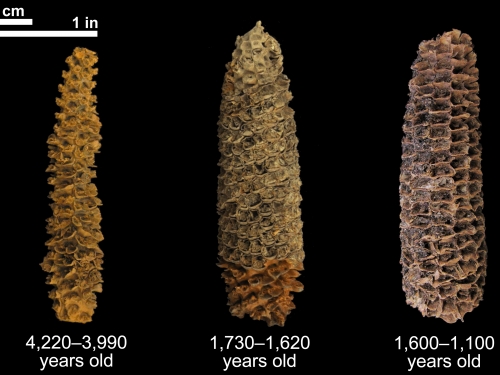An assortment of corn cobs of varying ages found at the El Gigante rock shelter site in Honduras.
After scientists first discovered the remnants of a fully domesticated and highly productive variety of 4,300-year-old corn at the El Gigante rock shelter, a team searched the archaeological strata surrounding the site for other cobs, kernels or anything else that might yield genetic material. They also started working toward sequencing some of the site’s 4,300-year-old corn samples—the oldest traces of the crop at El Gigante. Over two years, the team attempted to sequence 30 samples, but only three were of suitable quality to sequence a full genome. The three viable samples all came from the more recent layer of the rock shelter’s occupation—carbon dated between 2,300 and 1,900 years ago—revealing genetic overlap between the three samples from the Honduran rock shelter and corn varieties from South America.
In the Dec. 14 issue of the journal the Proceedings of the National Academy of Sciences, Logan Kistler, curator of archaeogenomics and archaeobotany at the Smithsonian’s National Museum of Natural History, and an international team of collaborators report the fully sequenced genomes of three roughly 2,000-year-old cobs from the El Gigante rock shelter in Honduras. Analysis of the three genomes reveals that these millennia-old varieties of Central American corn had South American ancestry and adds a new chapter in an emerging complex story of corn’s domestication history.




